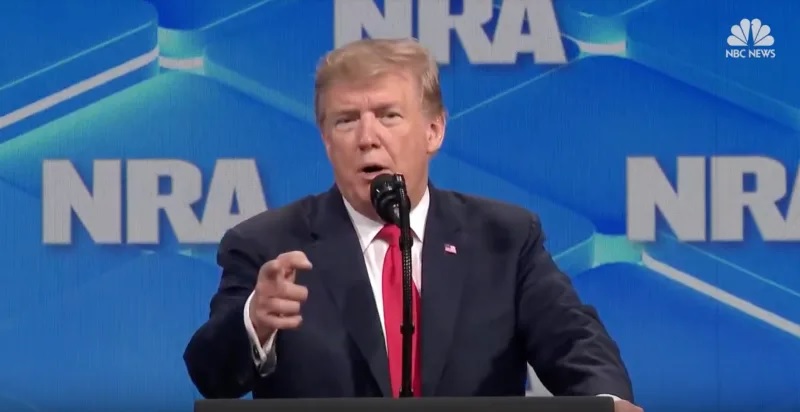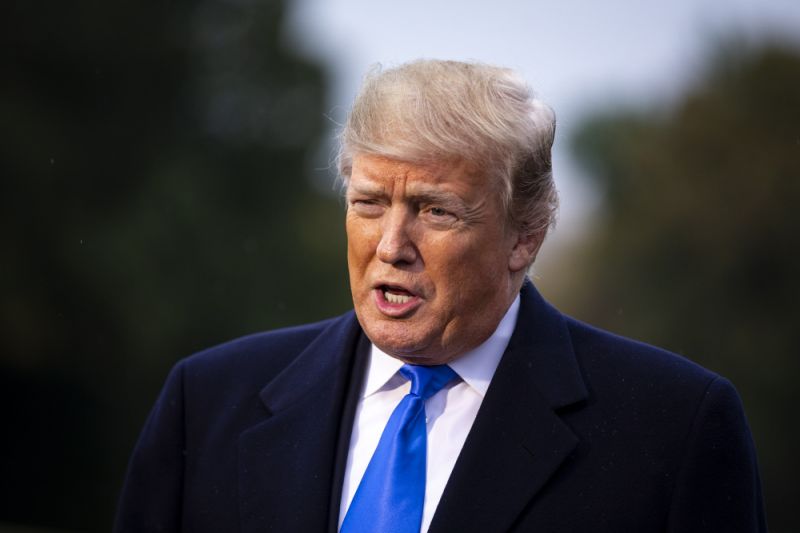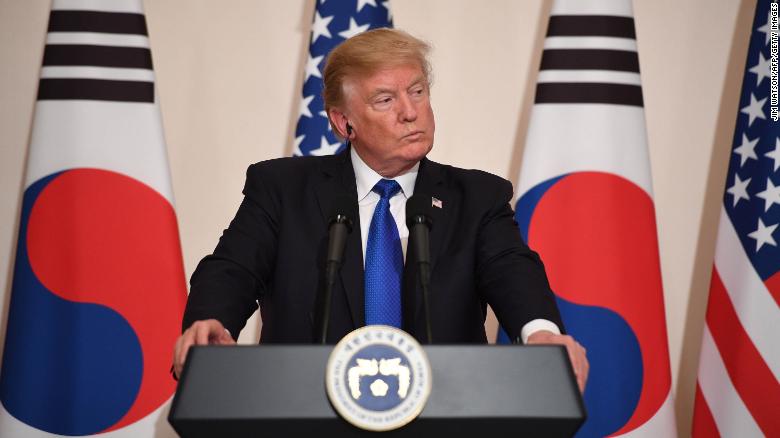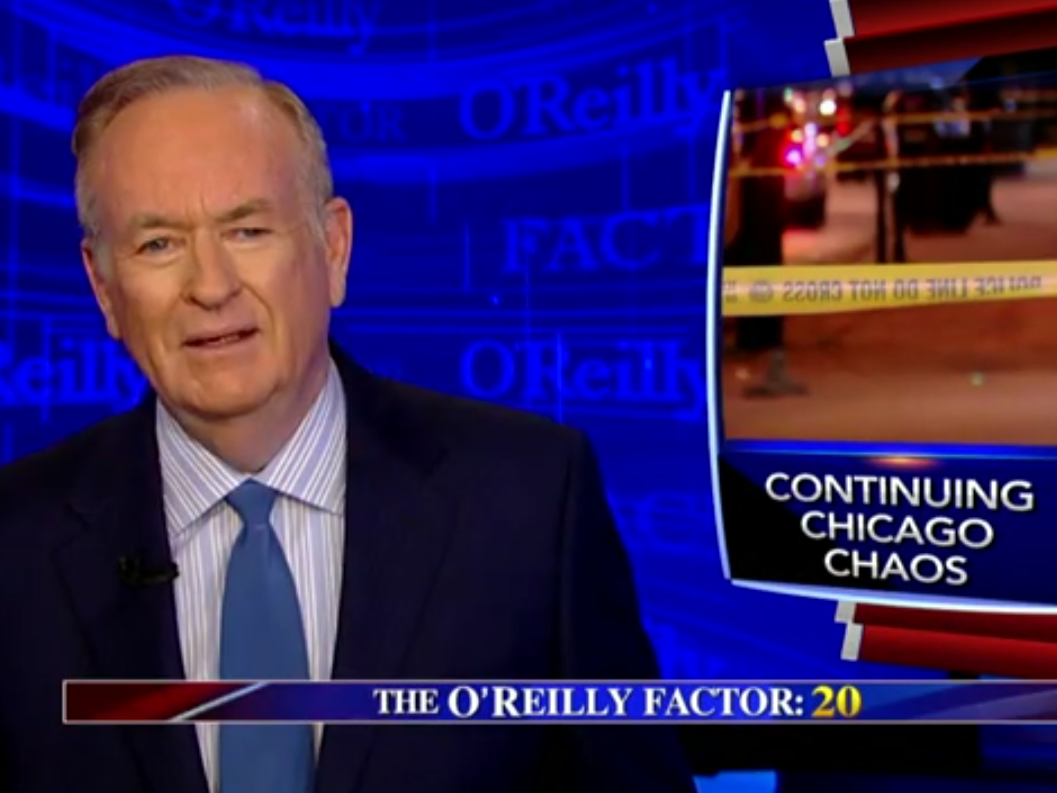Trump blames news media for causing ‘anger and rage’ in wake of domestic terror attack
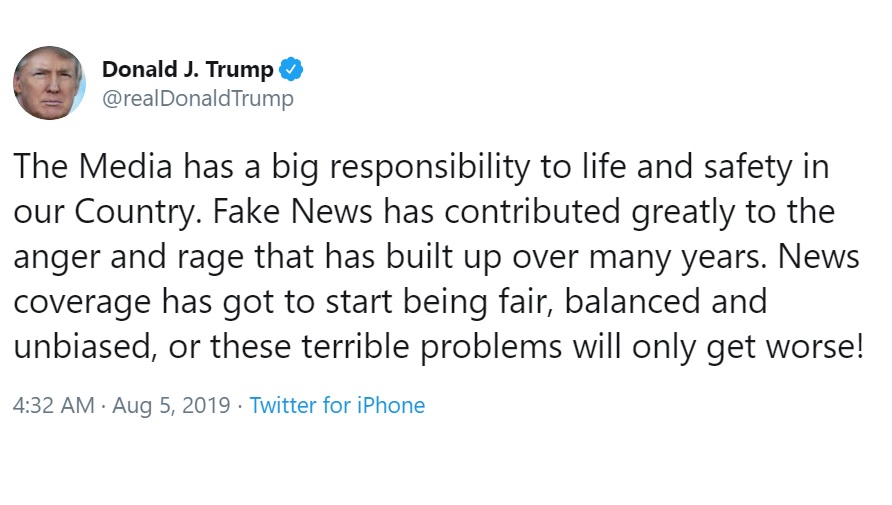
Donald Trump has blamed what he called “Fake News” for stoking “anger and rage” in the wake of two gun attacks that killed a total of 29 people, one of which is being treated as a case of domestic terrorism.
In a tweet on Monday morning, the president said the media had a responsibility to safeguard “life and safety” in the United States.
“Fake News has contributed greatly to the anger and rage that has built up over many years,” he wrote.
“News coverage has got to start being fair, balanced and unbiased, or these terrible problems will only get worse!”
The tweet came at the end of a string of angry missives about the El Pasoand Dayton mass shootings over the weekend, which saw 29 people shot dead in less than 24 hours.
Earlier, Mr Trump had thrown his support behind tougher background checks for buying guns, but then insisted any legislation was tied to immigration reform.
There is no obvious connection between the two shootings and immigration reform. The suspect in El Paso, Patrick Crusius, is believed to be a white nationalist and police are treating the attack as an act of domestic terrorism.
Now, the president has turned his ire on the familiar foe of the media and appeared to accuse journalists of being partly to blame for the epidemic of gun violence which blights America.
Speaking to reporters just before boarding Air Force One, Mr Trump had offered his condolences to the families of those killed in Dayton and El Paso.
“We love the people,” he added. “Hate has no place in our country.”
However, earlier Democrats had accused Mr Trump of “sowing seeds of hate” and said he, not the media, was responsible for the wave of right-wing terrorist attacks in recent years.
Cory Booker, a Democratic senator and presidential candidate, told NBC: “You reap what you sow, and he is sowing seeds of hate in this country.
“This harvest of hate violence we’re seeing right now lies at his feet. He is responsible.”
Mr Trump has repeatedly attacked the media since he was elected, condemning almost any critical coverage of his divisive presidency as “fake news”.
Although the business mogul’s linking of the press with the two shootings appears to simply continue this trend, he is not the first person to connect journalism and gun violence.
There is some evidence the media’s coverage of mass shootings can lead to a wave of copycat attacks.
One study from last year by Australian researchers concluded there were spikes in the numbers of shootings in America after a high profile incident is given wall-to-wall exposure on rolling TV news.
In total, the study suggested 58 per cent of all shootings in the three year sample they examined could be linked to coverage of previous tragedies.
